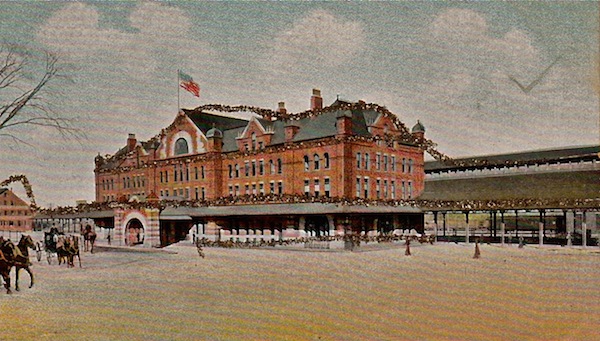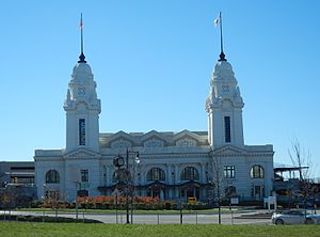William Morgan: New England's glorious temples of transport
A Sunday autumn afternoon ramble about an antique shop in Concord, Mass., produced the two images below of magnificent but long-lost railroad stations.
For two lousy bucks, I got to marvel at the duo of huge temples of transportation and potent symbols of 19th-Century New England wealth. I could also contemplate the stupidity of our county nearly abandoning passenger rail service as it engaged in the folly of tearing down gorgeous parts of our architectural patrimony. The railroad station in the New Hampshire capital –a Victorian pile worthy an industrial city in the English Midlands – was razed for a shopping center in 1960. Once one of the most powerful companies in the region, the Boston and Maine Railroad went bankrupt a decade later.
Boston and Maine Railroad Station, Concord, N.H.
Union Station in Worcester was far grander, with giant covered sheds and a 200-foot-high tower that was a combination of the Palazzo Vecchio in Florence and a Hanseatic bourse. Built for the Boston and Albany Railroad in 1875, Union Station was torn down in 1911.
Although falling short of its abandoned predecessor, and looking like the legislative building or presidential palace of a banana republic, the pompous new terminal at least attempted a civic statement. It would seem nigh on impossible to surpass the splendor of the post-Civil War cathedral of transportation.
Union Station, Worcester, torn down in 1911.
The current Union Station, Worcester.


